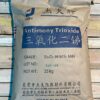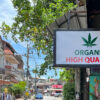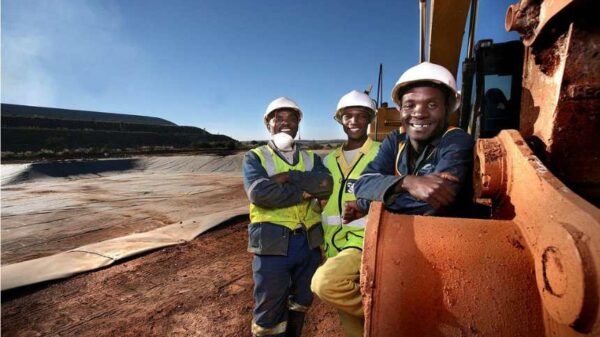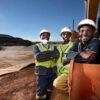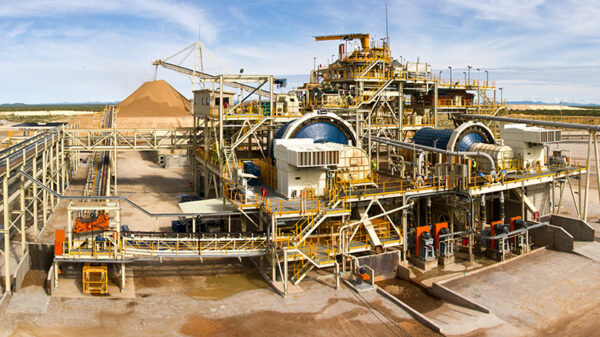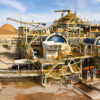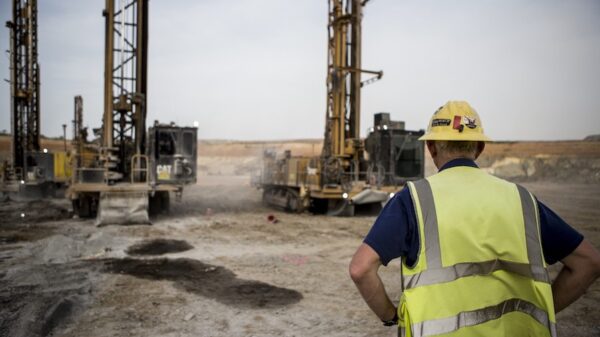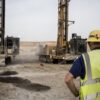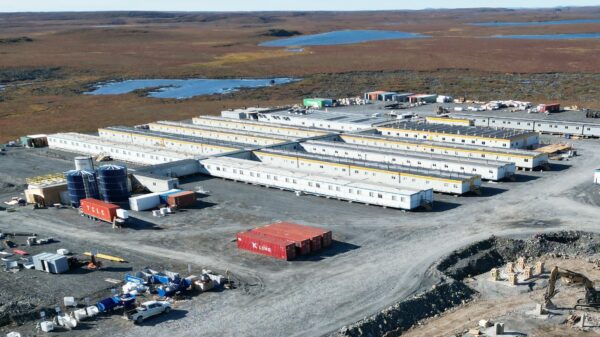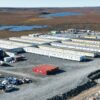Vancouver-based B2Gold Corp. (TSX: BTO) (NYSE AMERICAN: BTG) (NSX: B2G) saw positive results from its latest drilling results in Fekola Complex the Republic of Mali, Africa.
The mining company announced the drill results this week and reaffirmed its 2022 total gold production guidance of 990,000 to 1 million ounces following gold production records at the Fekola Mine in October and November this year. This includes 40,000 to 50,000 attributable ounces projected from Calibre Mining Corp. (TSX: CXB) (OTCQX: CXBMF).
B2Gold is conducting a $35 million exploration program on the Fekola Complex which includes Fekola, Cardinal, Anaconda Area, Bakolobi, and Dandoko. Recent drilling has been focused on the Anaconda Area, including the Mamba, Adder, Anaconda, Cascabel, Viper, and Cobra zones.
Since it started, B2Gold has completed approximately 169,000 meters of combined diamond, reverse circulation and air core drilling on the Fekola Complex.
Metallurgical and infill drilling are currently underway under the recently acquired Dandoko permit, where approximately 700 kilograms of saprolite material will be collected for recovery variability testing from eight new diamond drill holes.
The Fekola Mine produced around 80,000 ounces of gold in October 2022 and around 95,000 ounces of gold in November 2022, two production records in a row.
B2Gold stock went down Thursday by 4.36 per cent to $4.61 on the Toronto Securities Exchange.
Read more: Calibre Mining high-grade gold drill positive results to continue at Panteon North, say analysts
Read more: Calibre releases short doc on environmental initiatives in Nicaragua
Mamba Zone focuses on high-grade sulfide shoots
The company’s Mamba Zone is focused on expanding high-grade sulfide mineralization shoots. Drilling in the area is targeting up to three plunging bodies of sulfide mineralization (one originating at Mamba Main Zone, one originating at Mamba West and one potentially originating at Mamba North. Mineralization remains open at depth.
Highlights from the zone include:
- Hole BND_119 returned 9.48 grams per tonne (g/t) gold over 14.60 meters (m) from 309.40 m and 5.01 g/t gold over 15.10 m from 347.60 m.
- BND_119 intersected some of the highest grade sulfide drilled to date at the Anaconda Area.
- Hole MSD_230 returned 2.38 g/t gold over 26.21 m, from 354.79 m (including a higher-grade interval of 3.76 g/t gold over 14.00 m, from 367.00 m) and extends the southernly plunge extent of known mineralization below the current resource pit by an additional 200 m.

Mamba Long Section Photo via B2Gold Corp.
At its Cobra zone, the mineralized footprint expanded south after recent drill results on the Bakolobi permit. At Cobra, exploration is focused on expanding saprolite mineralization near the surface and sulfide mineralization at depth.
Highlights from the Cobra zone include:
- Hole MSR_997 returned 4.46 g/t gold over 3.62 m from 209.00 m and 3.08 g/t gold over 24.12 m from 220.00 m (sulphide).
- Mineralization appears to have a shallow north plunge, still open along strike, to the north and to the south.
- Hole BKAC_0157 returned 1.46 g/t gold over 36.00 m from 19.00 m (saprolite), demonstrating the near-surface saprolite potential of the Cobra Zone extension onto the Bakolobi permit.

Cobra Long Section Photo via B2Gold Corp.
Read more: Libero Copper & Gold and local communities partner to restart mining project in Argentina
Read more: Midland Exploration starts 10K-metre drill program in Quebec
The company discovered saprolite mineralization at the new Boomslang Zone which is 800 meters to the West and parallel to the Cobra Zone. B2Gold says this is an opportunity that remains for further discoveries of north-to-south trending deposits parallel to the Mamba Zone and Cobra Zones. Hole BKAC_0342 returned 1.97 g/t gold over 30.00 m from 12.00 m (saprolite).
Additional reverse circulation and diamond drilling are underway to follow up on saprolite intercepts and test for the presence of underlying sulfide mineralization.
At Dandoko, drilling validated the known high-grade saprolite zone at Seko. Hole DDSK22_138 returned 18.84 g/t gold over 21.80 m from 112.00 m (saprolite), and hole DDSK22_129 returned 3.31 g/t gold over 23.65 m from 31.00 m, and 5.87 g/t gold over 50.50 m from 58.00 m (saprolite).
Mining from the high-grade Fekola open-pit Phase 6 is anticipated to continue through the balance of 2022 and into 2023.
Read more: Azincourt Energy finishes preparing for another winter drilling campaign
Read more: G7 countries form Sustainable Critical Minerals Alliance to reverse biodiversity loss
The primary laboratories for Fekola are SGS Laboratories in Bamako, Mali and Bureau Veritas Laboratories in Abidjan, Cote d’Ivoire. Exploration samples will be analyzed at the Fekola Mine laboratory. At each laboratory, samples are prepared and analyzed using a 50-gram fire assay with atomic absorption finish and/or gravimetric finish. Umpire assays are used to monitor lab performance monthly.
Follow Natalia Buendia Calvillo on Twitter
natalia@mugglehead.com


